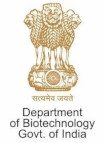Skin-Permeable Nano-Lithocholic Lipidoid Efficiently Alleviates Psoriasis-like Chronic Skin Inflammations.
| Title | Skin-Permeable Nano-Lithocholic Lipidoid Efficiently Alleviates Psoriasis-like Chronic Skin Inflammations. |
| Publication Type | Journal Article |
| Year of Publication | 2022 |
| Authors | Rachamalla HKrishnared, Voshavar C, Arjunan P, Mahalingam G, Chowath RPraksash, Banerjee R, Vemula PKumar, Marepally S |
| Journal | ACS Appl Mater Interfaces |
| Date Published | 2022 Mar 29 |
| ISSN | 1944-8252 |
| Abstract | Long-term application of topical therapeutics for psoriasis has a plethora of side effects. Additionally, skin-permeating agents used in their formulations for deeper dermal delivery damage the skin. To address these limitations, we developed novel lithocholic acid analogues that could form lipid nanoparticles (nano-LCs) spontaneously in the aqueous milieu, permeate through the skin, penetrate the deeper dermal layers, and exert anti-inflammatory effects against psoriasis-like chronic skin inflammations. Prior findings demonstrated that lithocholic acid acts as a vitamin D receptor agonist without affecting the Ca metabolism and also as an antagonist for ephrin type-A receptor 2 (EphA2). Taking cues from the previous findings, lithocholic acid derivatives with twin alkyl chains (LC6, LC8, LC10, and LC-12) were synthesized, nanoparticles (nano-LCs) were prepared, and they were evaluated for their skin permeability and anti-inflammatory properties. Among these nano-LCs, nano-LC10 demonstrated superior anti-inflammatory properties and inhibition of keratinocyte proliferation in various cell-based evaluations. Furthermore, the therapeutic efficiency of nano-LC10 was evaluated in an imiquimod-induced psoriasis-like mouse model and demonstrated comparable efficiency with the standard topical formulation, Sorvate, in reducing skin inflammations. Nano-LC10 also reduced systemic inflammation, organ toxicity, and also proinflammatory serum cytokine levels. Overall, nano-lithocholic lipidoid (nano-LC10) can be a potential novel class of therapeutics for topical application in treating psoriasis. |
| DOI | 10.1021/acsami.1c19180 |
| Alternate Journal | ACS Appl Mater Interfaces |
| PubMed ID | 35347979 |

